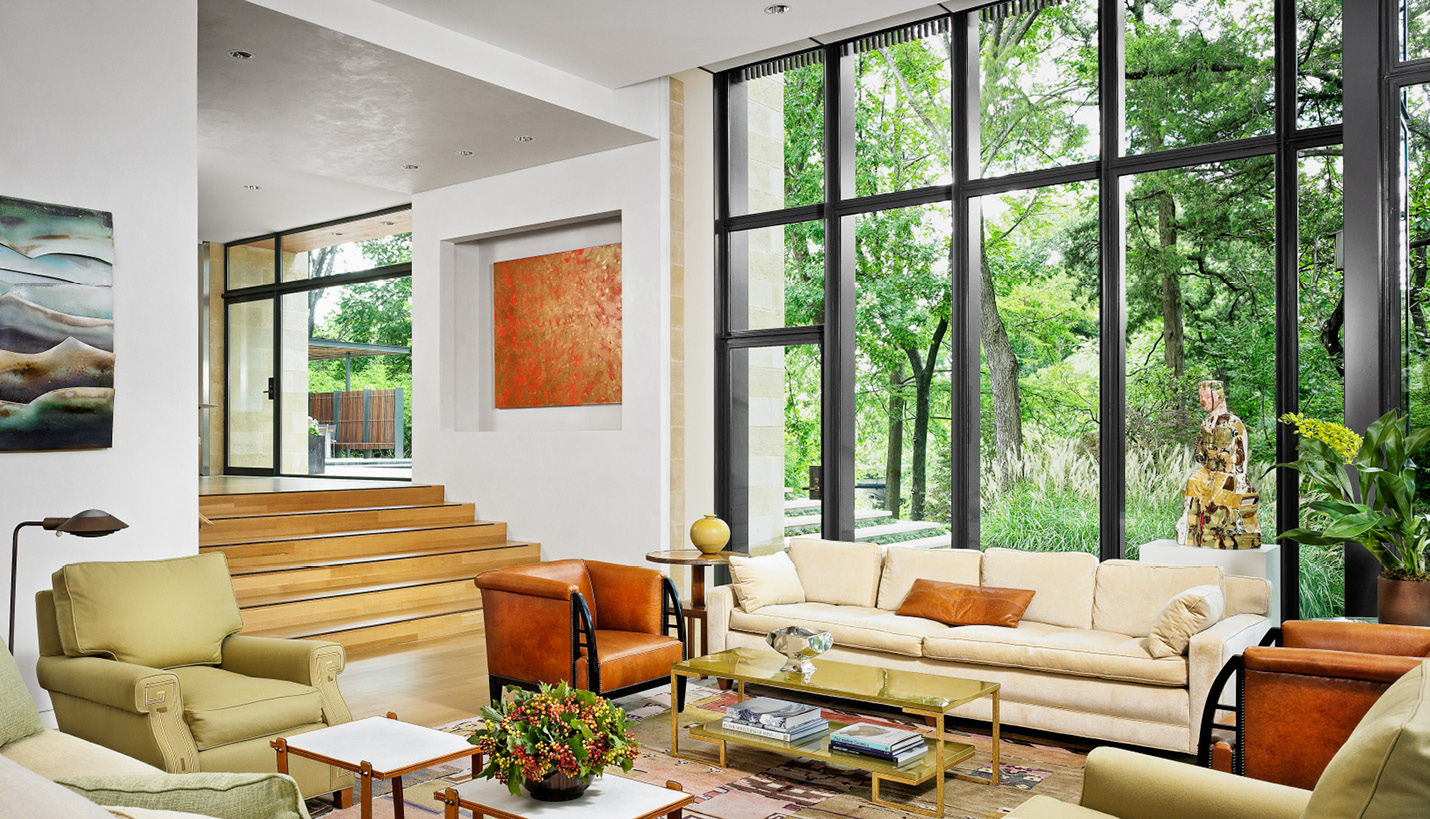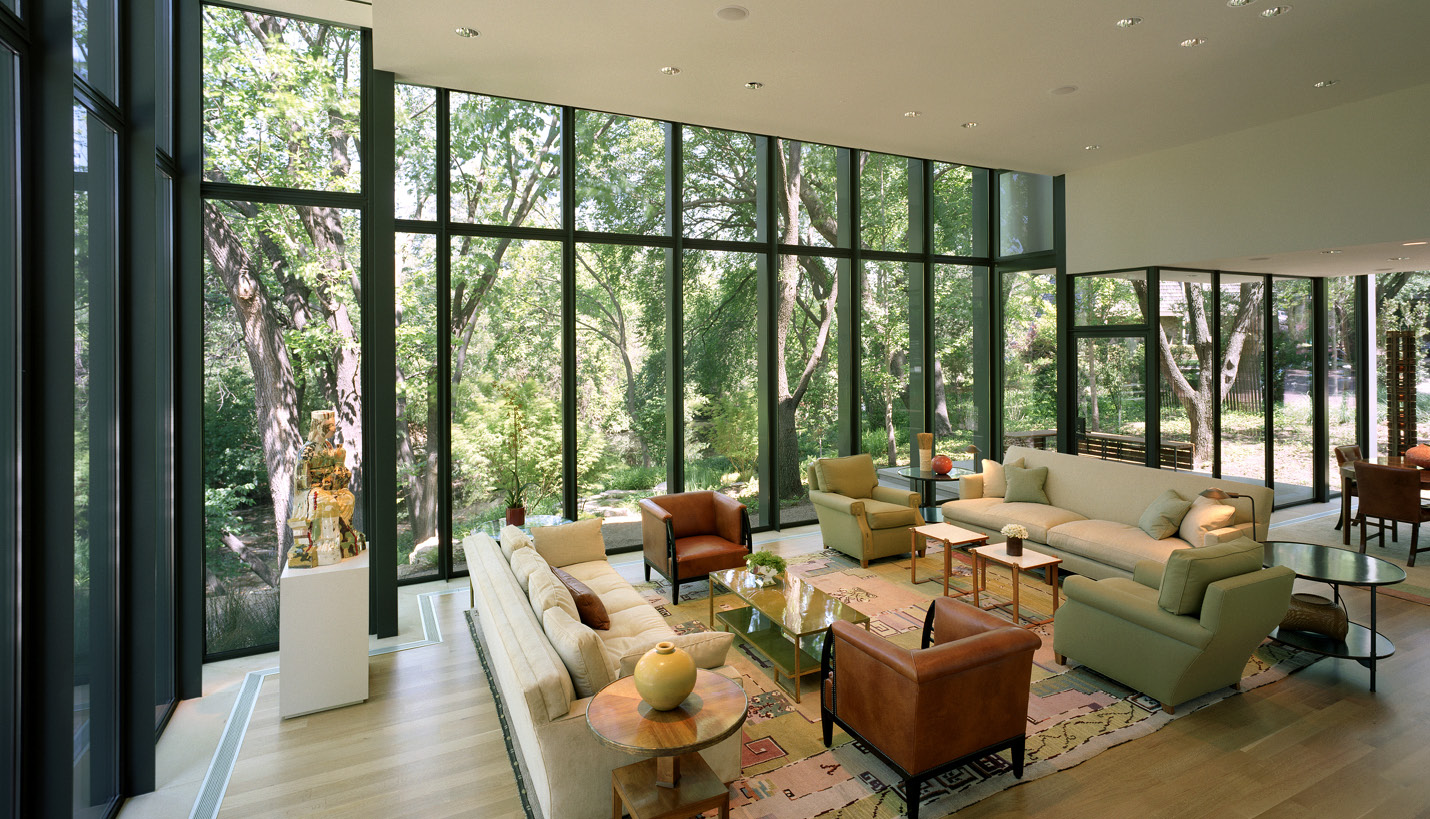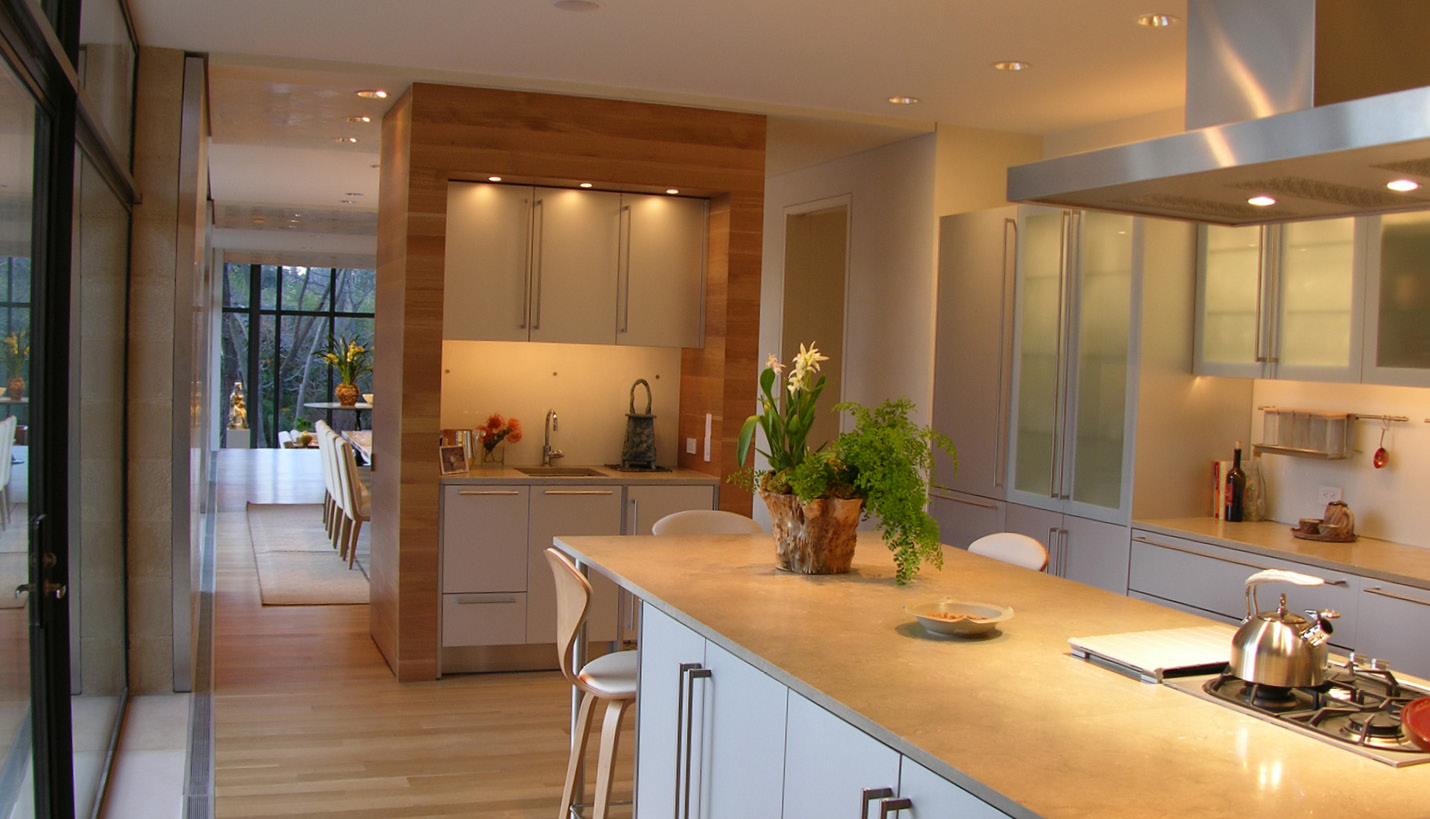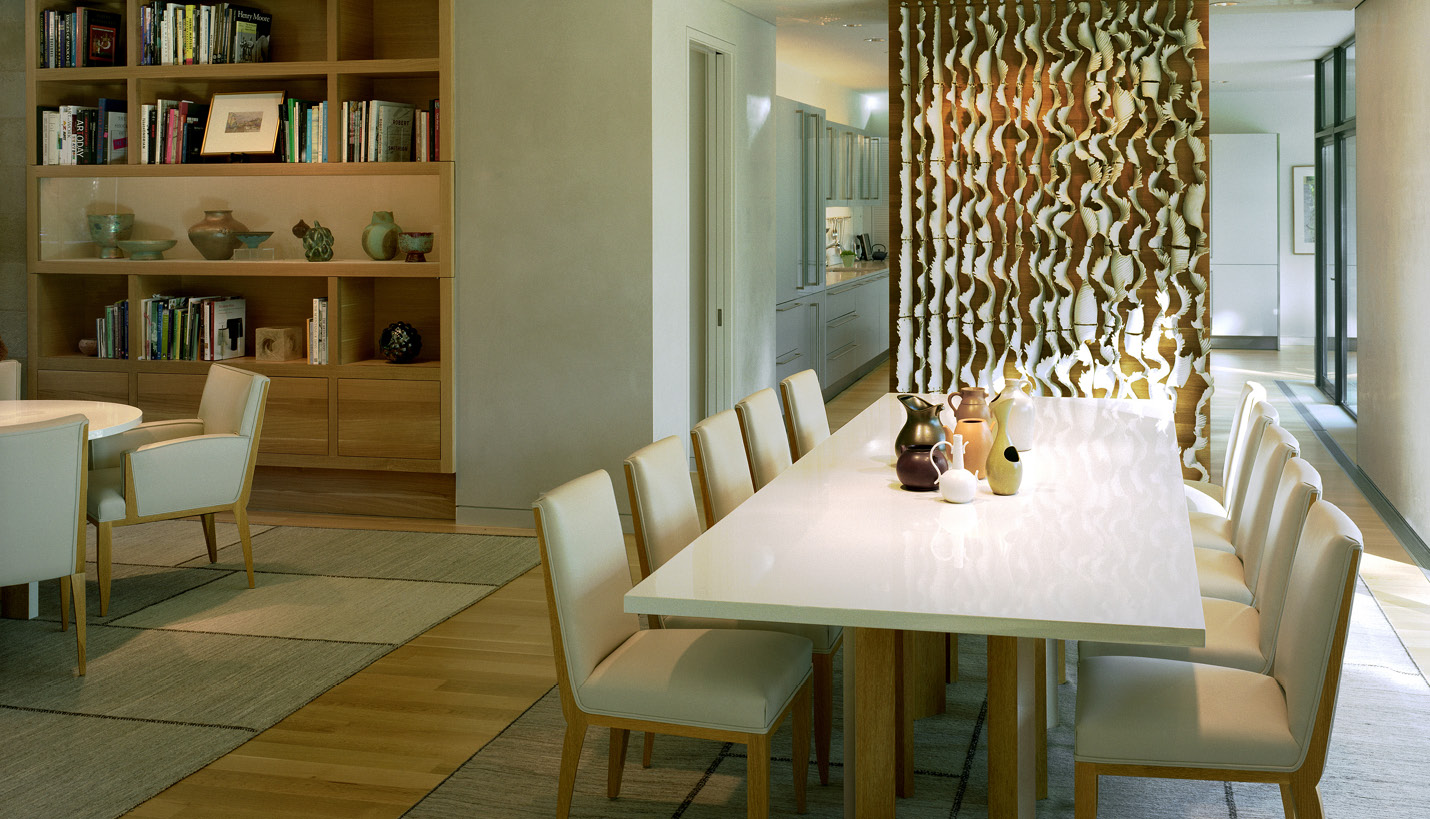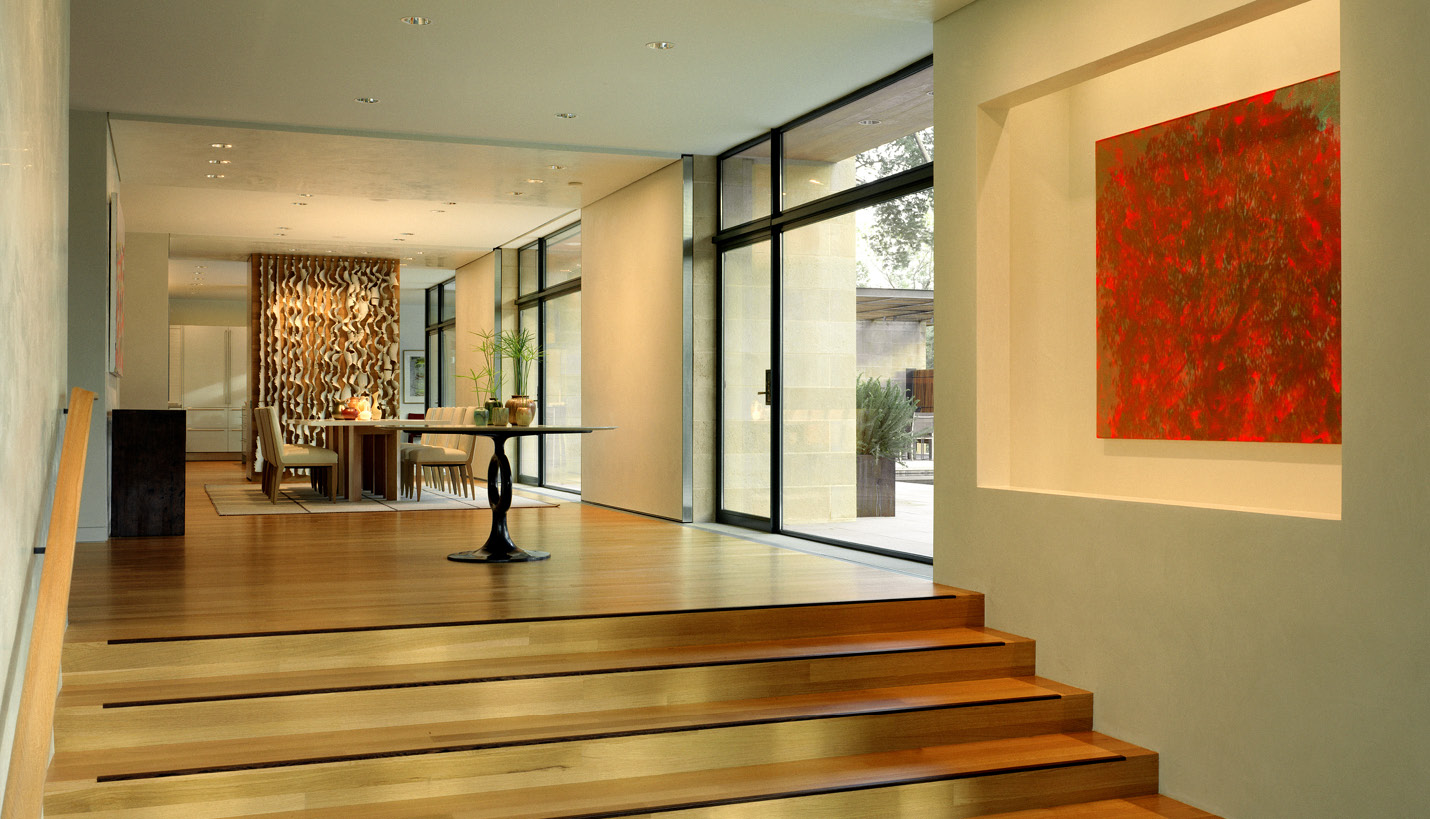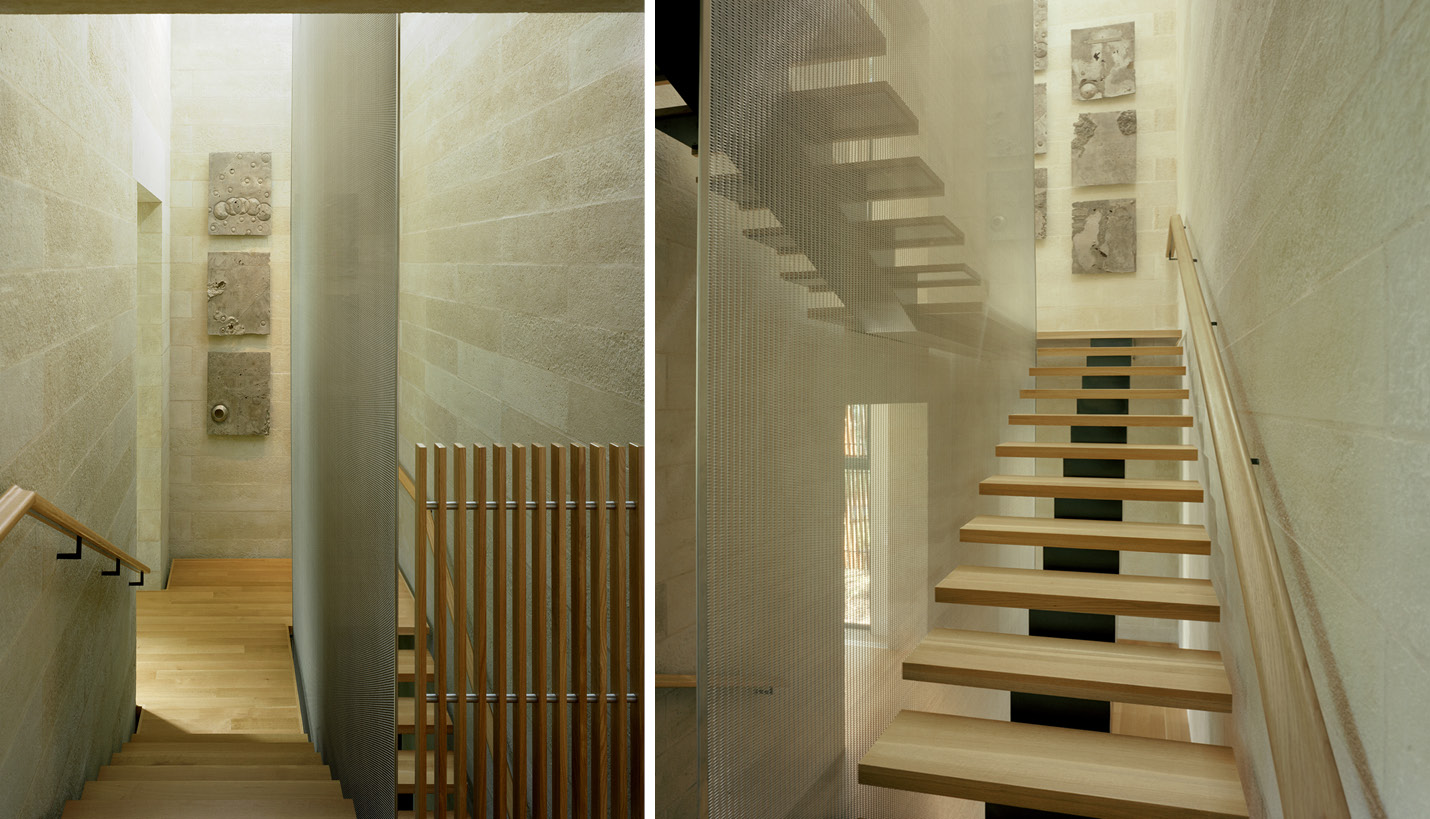Past Made Perfect With Emily Summers: A Radical Redo of a 1970 Texas House Fulfills a Dream
Page Senior Principal, Lawrence W. Speck, was chosen to renovate a house built by the well-known architect Enslie (Bud) Oglesby. Read what Architectural Digest has to say in order to learn the details of the renovation process and the remarkable work of Lawrence W. Speck.
If there are two basic points Lawrence W. Speck, a tenured professor and former dean of the school of architecture at the University of Texas at Austin, inculcates in his design students, they are to respect the work of their celebrated forebears and to wield the tools of invention and engineering in moving beyond prescribed architectural boundaries. With his restructuring of an existing house in a leafy suburb of Dallas, the teacher has, in effect, created a textbook study that incorporates each of his pet precepts into a single graphically illustrative example.
In 1970 the late, esteemed Dallas architect Enslie (Bud) Oglesby designed a house for a friend in Highland Park. The building—never representative of Oglesby’s oeuvre because of compromises he made in the name of friendship—had deteriorated over the decades. When one of the city’s more prominent philanthropists sought a new residential direction after the death of her husband, she enlisted the services of Emily Summers, a Dallas interior designer familiar with the house and its provenance. Summers advised her client to purchase the property and presented her with a select list of potential architects for the significant amount of work it required. “She looked at some great portfolios,” Summers says. “But she and Larry were completely in sync. It was clear that he was the right person to make the house into something it had never been before.”
His six stone volumes—three articulating the front façade, three the rear—are a rhythmic order of solids and voids.
Speck, in addition to his academic post, is a principal in the Austin office of the architectural firm PageSoutherlandPage, a large commercial practice that takes on few residential commissions. “There was a period of about 10 years,“ he allows, ”when I didn’t design a single house.” However, the particular conditions of the Highland Park project—practical as well as theoretical, touching on his own academic history of lessons learned and lessons taught—were catnip to someone so steeped in the modernist tradition of Texas and so amenable to righting an architectural wrong.
“It was an old clunker of a place,” Speck says, “a heartbreaker. Bud was such a good architect, but this was the worst thing he ever did: not well built, bizarre finishes, materials, arrangements, rooms. If it had been designed for a regular client instead of a friend, it would have looked very different. As is true of all of his buildings, though, it was beautifully sited. We considered leveling the house and just retaining that nice footprint, except that none of us, especially the owner, could bear to tear down anything of Bud Oglesby’s. She said, and I agreed, ’Keep what you can.’”
What was eminently retainable was the planning principle of zoned areas. Speck and Oglesby, products of the Massachusetts Institute of Technology in different eras, each had incorporated the tenets of Louis Kahn, a central one being the division of “servant” (stairs, elevator, storage, mechanical) and “served” (public and private living) spaces. “In plan, you could see a Kahn clarity, but you couldn’t feel it in the house,” says Speck, who “brought back a rigor and geometry” to the spatial configurations and, through his use of form and material, a narrative to the massing. His six stone volumes of servant spaces—three articulating the front façade, three articulating the rear, where they are separated by wood-clad upper-level rooms—are a rhythmic, Kahn-inspired order of solids and voids. And the original roof was a two-tiered band of wood shingles that still exhibits, as Speck (having installed Bermuda-style copper shingles) puts it, “that distinct Oglesby horizontality."
Speck and Summers—along with PageSoutherlandPage project architect Jason Smith and Wendy Konradi, of the Summers office—worked closely from the start to resuscitate and realize the potential of the house, which occupies a heavily wooded, in-town site overlooking Turtle Creek. “Everything we did was in response to the spectacular setting,” says Summers, whose seamless palette of soft greens and creamy earth tones extends from the fabrics and carpets to the sea-grass-limestone counter-tops in the kitchen and the white-oak floors and cabinetry throughout. “The views were forced and truncated before,” she comments. “We wanted to take the eye naturally all the way through the house.”
“The views were forced and truncated before,” she comments. “We wanted to take the eye naturally through the house.”
Reaching out to the surrounding terrain, Speck, who undertook a “radical renovation” by reworking most of the structural aspects of the building, lopped off both ends and replaced them with glazed wings. His most innovative new component is the multistory (fronting the living room, mezzanine study and upper-level master suite) glass-and-steel curtain wall that becomes a glass box at the northwest end. The curtain wall, which permits virtually unobstructed views, hangs from a cantilevered plane by slender steel blades; it is lightly tacked to the foundation at the bottom. Speck, with the blessing of the owner (“She was open to experimentation and to my trying something here on a scale not possible on a much larger project”), tested the properties of the metal. “To make a delicate curtain wall that maximizes visibility, the big, clunky steel members have to disappear,” he explains. “When it’s taut, pushed to the limit, it’s very efficient: a minimal amount of material for the most performance. We were hanging the individual pieces, and until we put in the tension, everything was flapping in the breeze. With thin blades as the structure—there aren’t any tubes or flanges—that it stands at all is amazing.”
An interior reference to the glass wall is the stainless-steel mesh screen suspended from a translucent lantern down the center of the main stairwell tower. The screen, also hung in tension, eliminates the need for guardrails, as it provides enclosure. Oak treads and landings that seemingly float apart from the Lueders limestone walls, as well as constantly changing natural illumination from overhead, starkly contrast with the stone’s weight and permanence. This juxtaposition of light and heavy—of mutable transparency and monolithic mass—effectively restates the overall architectural theme.
Given the climate, the outdoor living areas—a broad limestone-paved deck, intimate seating off the living room and a trellised dining terrace—share a ranking with the interior spaces. Notes Speck of the trellis and its complementing vertical screen/bench: “In Texas, we’re all about shade and dappled light; and wood slats catch every possible breeze.” A wraparound, continuous-flow fountain designed by landscape architect Mary Ellen Cowan, of MESA, introduces the elements of sound and motion to the rear garden.
“I’m a big believer in dialogue, and the project always involved more than just us,” says Speck. “I would think through design ideas as if Bud were in the room, imagining that he was completely free to create what he wanted. I knew he’d be figuring it all out in today’s terms and not be afraid of doing something new. I didn’t worry one whit about transforming his work: I thought of it as a true collaboration of us and him, where we reinterpreted his thinking with moves that were unavailable to him at the time.”
Contributed By
Therese Bissell - Architectural Digest
11/09/2011
People
Related Posts
- UT Tower Lights Up for Page's Larry Speck
- Good Design Endures in Detroit’s Lafayette Park
- Thoughts on Sol LeWitt: The Visionary and the Makers
- UT Press announces Texas book series
- Speck: Architecture influences lifestyle
- Living in Downtown Austin - Video interview with Lawrence Speck
- Newsmaker: Lawrence W. Speck



